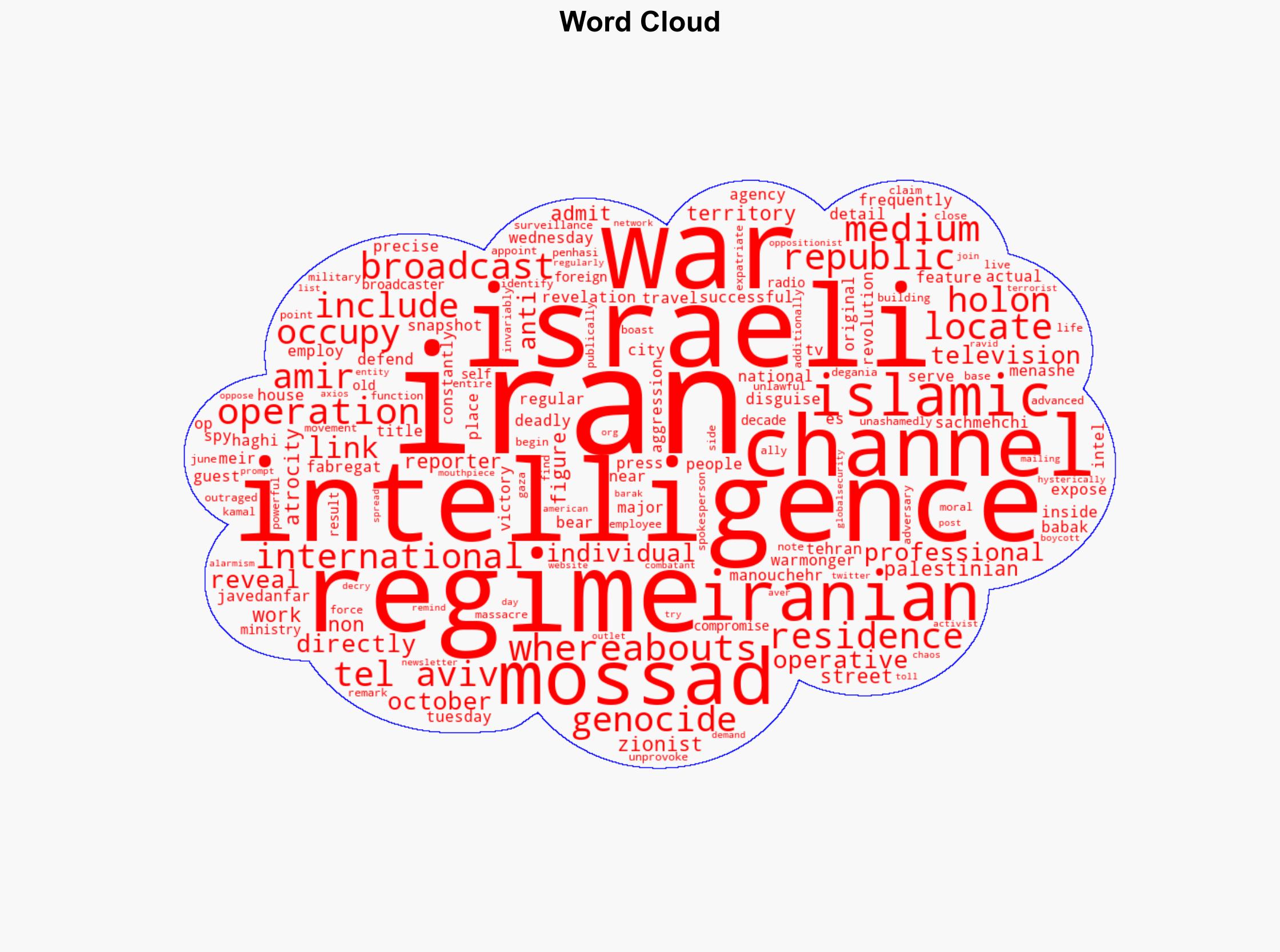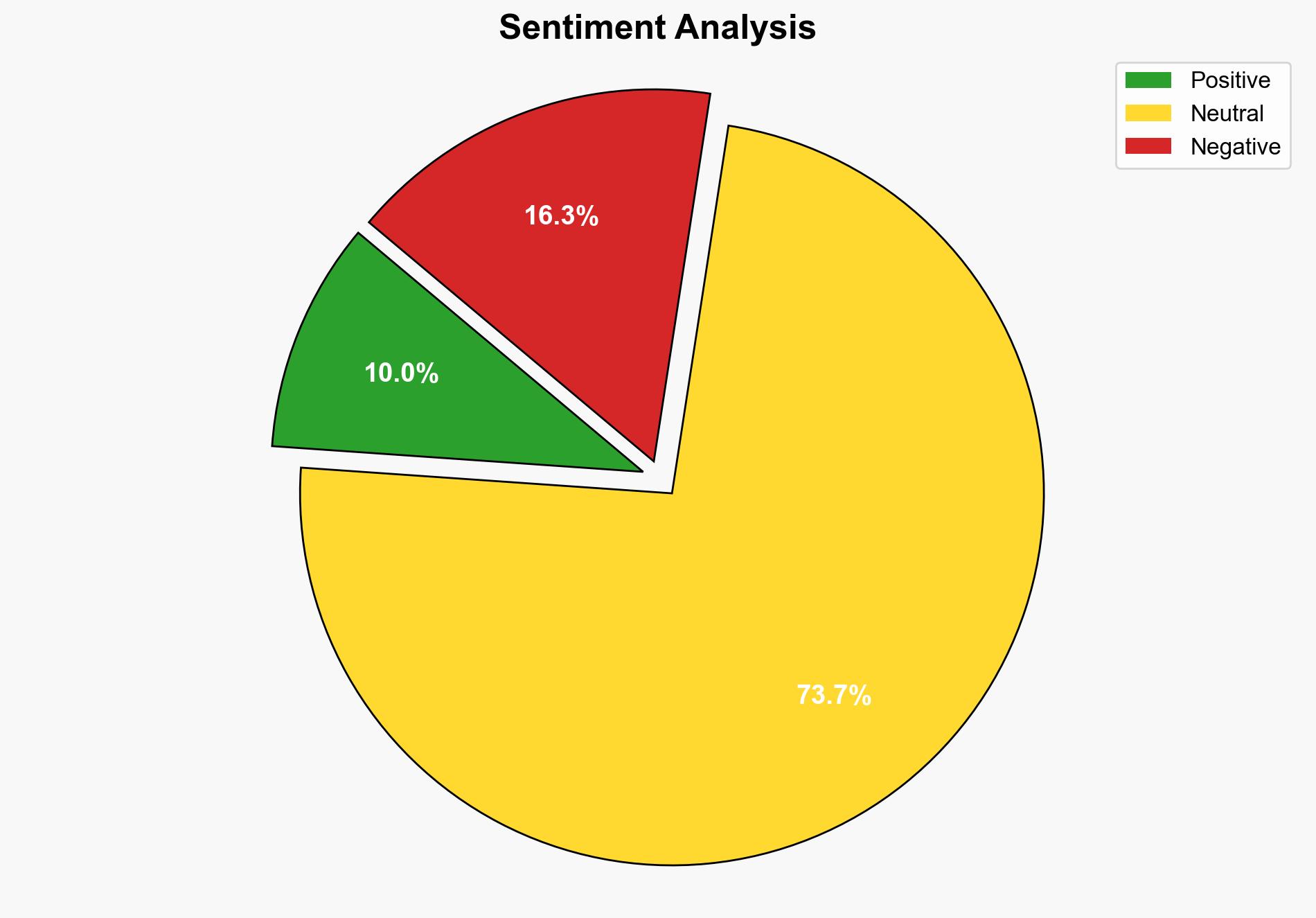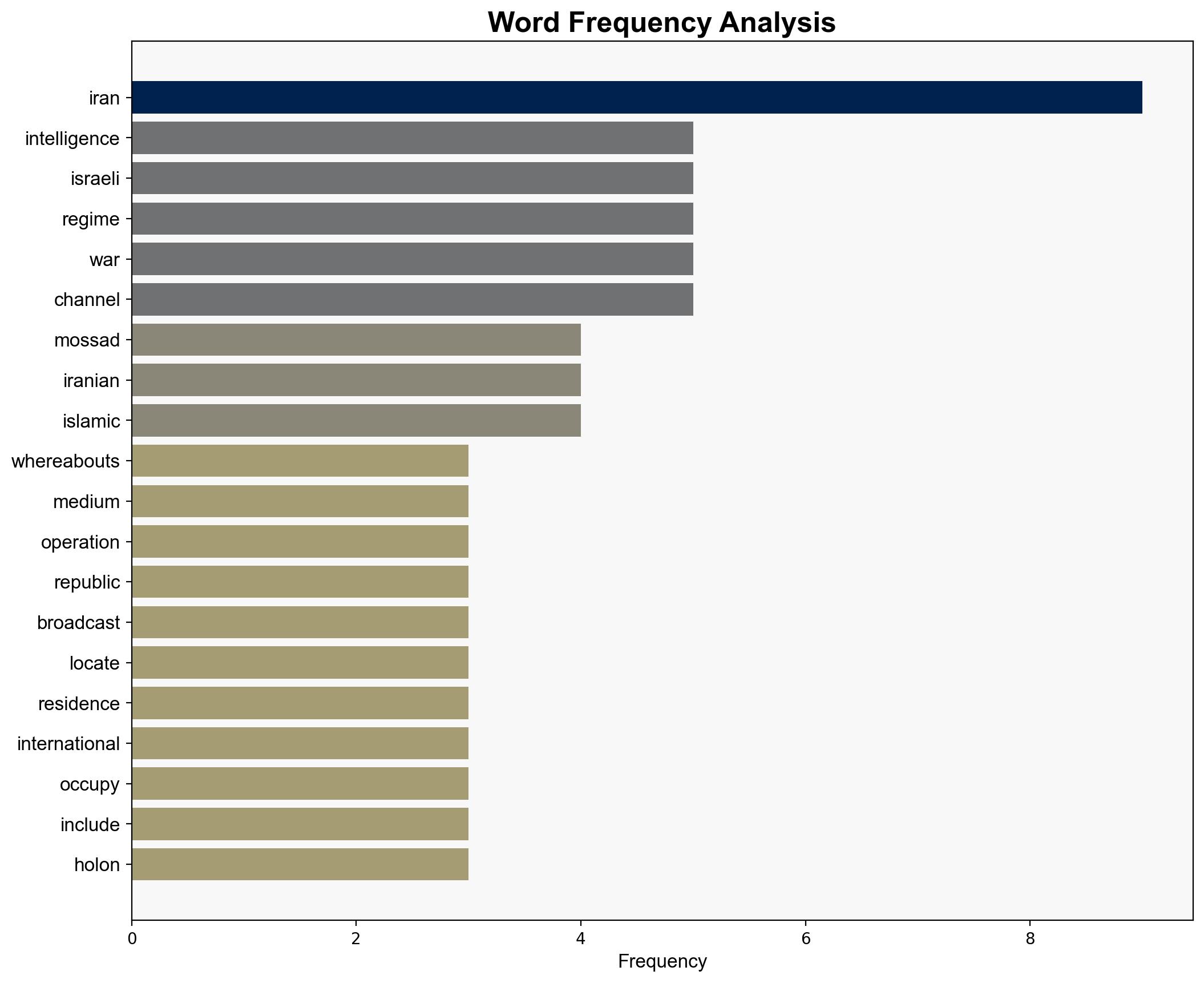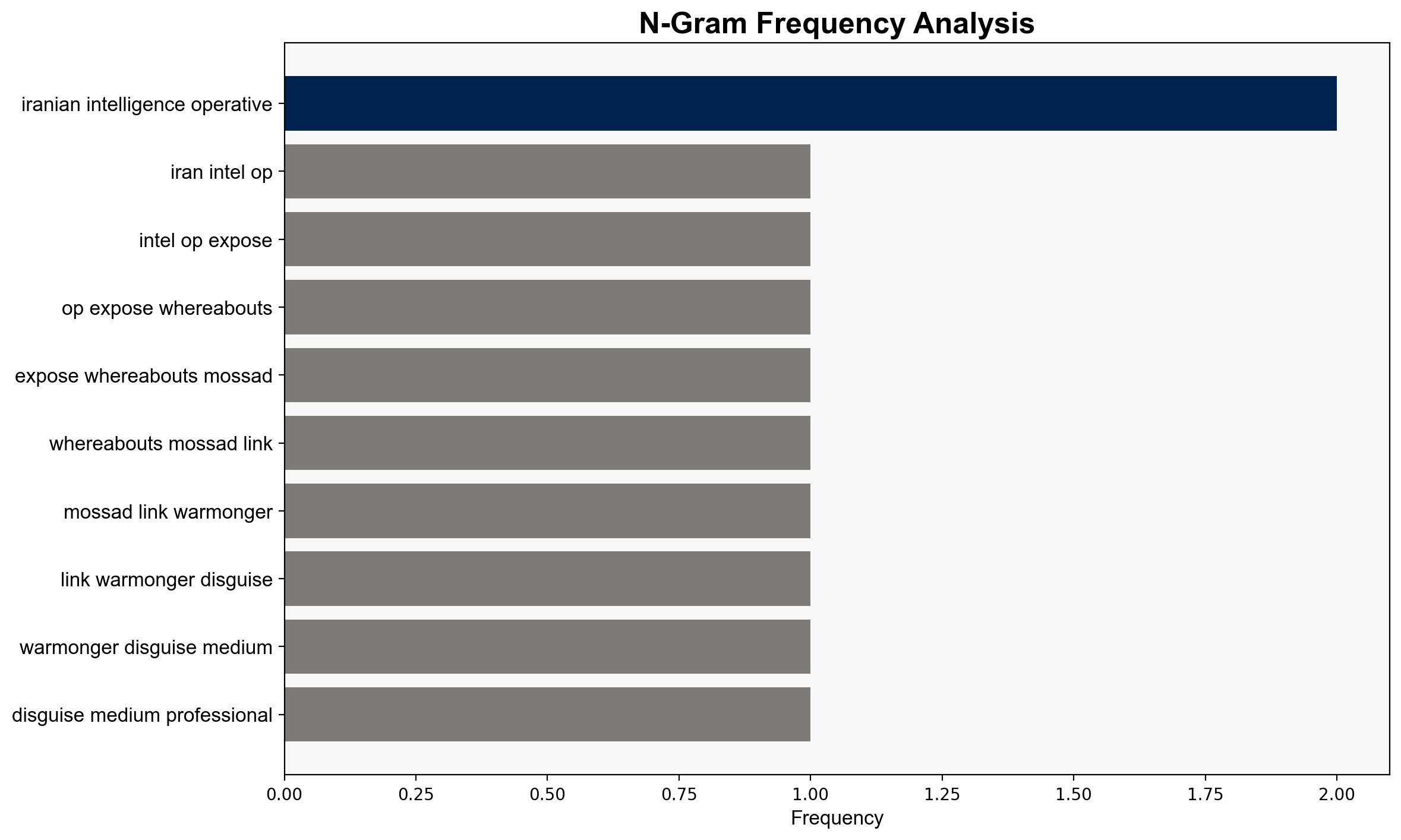Iran intel op exposes whereabouts of Mossad-linked information warmongers disguising as media professionals – Globalsecurity.org
Published on: 2025-10-23
Intelligence Report: Iran intel op exposes whereabouts of Mossad-linked information warmongers disguising as media professionals – Globalsecurity.org
1. BLUF (Bottom Line Up Front)
The most supported hypothesis is that the Iranian intelligence operation aims to discredit and disrupt perceived adversaries by exposing their locations and alleged affiliations with Israeli intelligence. Confidence level: Moderate. Recommended action: Monitor for retaliatory actions and increased tensions between Iran and Israel, and assess the impact on regional stability.
2. Competing Hypotheses
Hypothesis 1: The Iranian intelligence operation is a strategic move to expose and neutralize individuals linked to Israeli intelligence, aiming to weaken perceived threats and bolster domestic legitimacy by showcasing operational success.
Hypothesis 2: The operation is primarily a propaganda effort to delegitimize opposition figures and media outlets critical of Iran, using allegations of Israeli ties to sway public opinion and justify internal crackdowns.
3. Key Assumptions and Red Flags
– Assumptions: The intelligence provided by Iran is accurate and not exaggerated for propaganda purposes. The individuals named have verifiable links to Israeli intelligence.
– Red Flags: Potential bias in the source, as the narrative may serve Iran’s geopolitical interests. Lack of independent verification of the claims made about the individuals’ affiliations.
– Inconsistent Data: The absence of corroborating evidence from neutral or third-party sources raises questions about the validity of the claims.
4. Implications and Strategic Risks
– Geopolitical: Increased tensions between Iran and Israel could lead to retaliatory cyber or military actions.
– Psychological: The operation may influence public perception, leading to heightened nationalism or anti-Israel sentiment within Iran.
– Economic: Potential impacts on regional trade and investment if tensions escalate.
– Cyber: Risk of cyber operations targeting media outlets or individuals involved.
5. Recommendations and Outlook
- Monitor regional media and intelligence channels for signs of escalation or retaliatory actions.
- Engage in diplomatic efforts to de-escalate tensions and promote dialogue between involved parties.
- Scenario Projections:
- Best Case: De-escalation through diplomatic channels, leading to reduced tensions.
- Worst Case: Escalation into military conflict or significant cyberattacks.
- Most Likely: Continued propaganda efforts and minor retaliatory actions without major escalation.
6. Key Individuals and Entities
– Babak Es Haghi
– Meir Javedanfar
– Menashe Amir
– Kamal Penhasi
– Barak Ravid
7. Thematic Tags
national security threats, cybersecurity, counter-terrorism, regional focus





